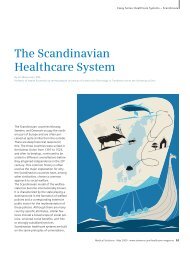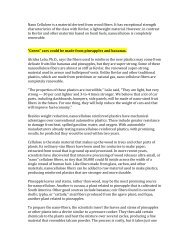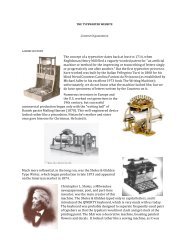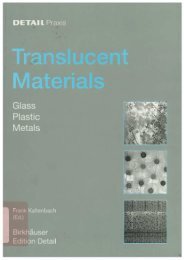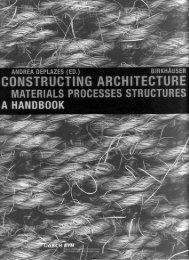Download text-only Bibliography - California College of the Arts
Download text-only Bibliography - California College of the Arts
Download text-only Bibliography - California College of the Arts
You also want an ePaper? Increase the reach of your titles
YUMPU automatically turns print PDFs into web optimized ePapers that Google loves.
Lara Manzanares<br />
York: Oxford, 1977.<br />
Awesome. Totally awesome. I might like to own this book.<br />
NA 2500 .A445<br />
Isozaki, Arata. Japan-ness in Architecture. Cambridge: MIT Press, 2006.<br />
Great resource and enjoyable read – talks about Japanese notions <strong>of</strong> space<br />
(including ‘ma’), ritual, tradition, utopia, time, Japan and <strong>the</strong> western world, etc….<br />
Articles/Papers<br />
Nute, Kevin (Associate Pr<strong>of</strong>essor <strong>of</strong> Architecture). " 'Ma' and <strong>the</strong> Japanese Sense <strong>of</strong><br />
Place Revisited: by Way <strong>of</strong> Cyberspace. " Japan: Muroran Institute <strong>of</strong> Technology,<br />
date unknown.<br />
This paper initiated a bit <strong>of</strong> a breakthrough for me in its comparison <strong>of</strong> <strong>the</strong><br />
Japanese sense <strong>of</strong> place (‘ma’) and its view <strong>of</strong> <strong>the</strong> threshold as an event ra<strong>the</strong>r than<br />
a place, to our movement through internet “places.”<br />
Stalder, Laurent. "Turning Architecture Inside Out: Revolving Doors and O<strong>the</strong>r<br />
Threshold Devices." Journal <strong>of</strong> Design History (2009) 22(1):69-77<br />
Really great find- Stalder explores <strong>the</strong> history <strong>of</strong> technological innovation <strong>of</strong> doors,<br />
specifically revolving doors and "air curtains," and explores <strong>the</strong> larger societal<br />
con<strong>text</strong> <strong>of</strong> our continual technological advances in <strong>the</strong> paradoxical space <strong>of</strong> <strong>the</strong><br />
doorway. He also talks about how <strong>the</strong> technological advances create a<br />
deconstruction and compartmentalization <strong>of</strong> <strong>the</strong> human body in <strong>the</strong> act <strong>of</strong><br />
passage.<br />
Bois, Yve-Alain. “The Iconoclast.” from <strong>the</strong> book Piet Mondrian, 1872-1944.<br />
Boston: Bullfinch, 1995.<br />
Very valuable resource for <strong>the</strong> development <strong>of</strong> my core ideas <strong>of</strong> duality, equilibrium,<br />
movement, stillness, universality, etc., and <strong>the</strong> language that goes with <strong>the</strong>m.<br />
Understanding what Mondrian was trying to achieve and how he did it are<br />
informing my current process.<br />
Kracauer, Siegried; Correll, Barbara; Zipes, Jack. "The Mass Ornament." New German<br />
Critique, No. 5 (Spring, 1975), pp 67-76<br />
I read this early on and <strong>the</strong>n set it aside. It seems to be making a comeback-<br />
Compartmentalization <strong>of</strong> <strong>the</strong> body, deconstruction from whole body into sets <strong>of</strong><br />
parts; patterns, demythologization, plus a strange mix <strong>of</strong> de-ritualization and<br />
hyper-ritualization.<br />
Kahn, Louis (Lecture). "Silence and Light - Louis I. Kahn at ETH, Zurich,<br />
Switzerland."From Complete Work 1935-1974. Boston: Birkhauser, 1987.<br />
9






